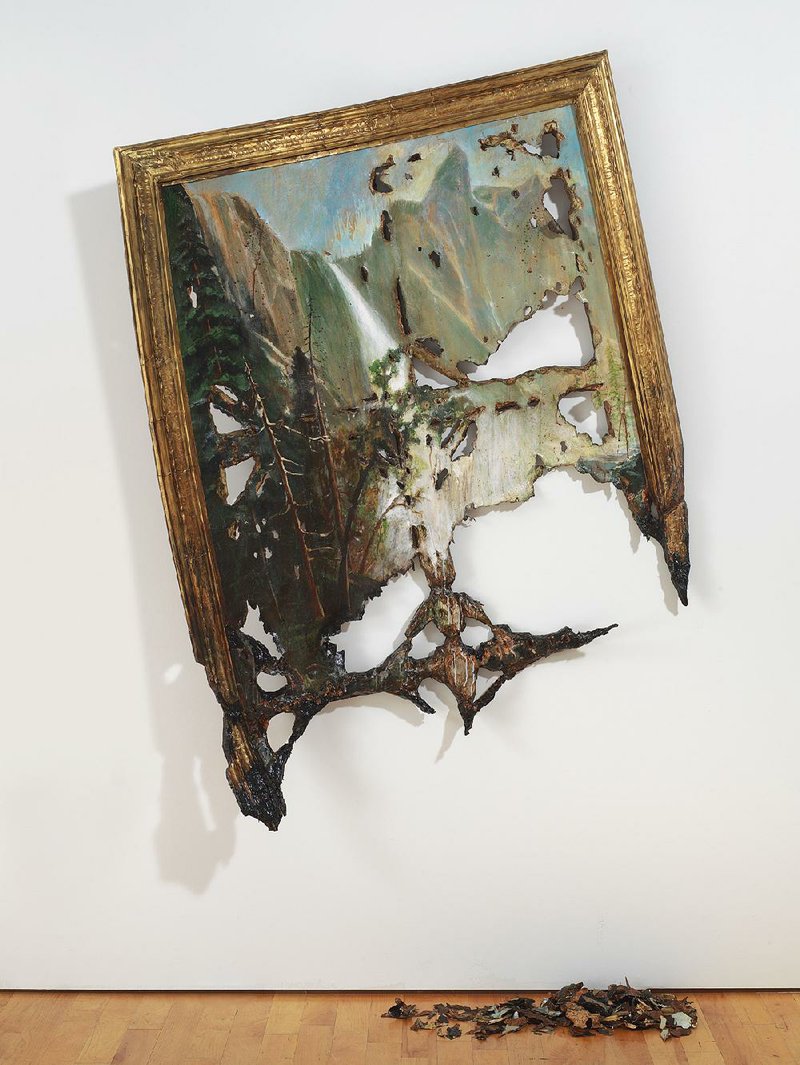BENTONVILLE --The curators of Nature's Nation: American Art and Environment, on view through Sept. 9 at Crystal Bridges Museum of American Arts, don't bear any resemblance to the rumpled academics in need of haircuts that we would often see at the front of classrooms at Cleveland State University decades ago.
Although I'm always up for a journey to Bentonville--three hours' driving time is my best yet--for press previews of the museum's Next Big Show (as well as dinner, probably at Pedaler's Pub or Azul Tequila), the topic this time around didn't hold me in thrall. Much of the information that's presented on the environment is hectoring and fatalistic and depressing to the point that many of us throw up our hands and declare that there's nothing an individual like poor little me can do to save the planet.
That cop-out was challenged by Karl Kusserow and Alan Braddock. These educators (Kusserow is the John Wilmerding Curator of American Art at the Princeton University of Art Museum, and Braddock is Ralph H. Wark Associate Professor of Art History & American Studies at William & Mary) are the originators of Crystal Bridges' current exhibition that traces three centuries of evolving ideas about the natural world.
The exhibit, Kusserow said to our group of journalists, encourages "looking at art in terms of how nature is represented, a method called eco-criticism."
Braddock added that it encompasses "300 years of American artists helping to invent ecological consciousness, of imagining the beauty of what we should try to preserve."
Both gentlemen are tall, elegant, stylish, and movie-star handsome. But most impressive is their absolute and contagious passion for describing how the paintings, photographs, sculptures, video, and indigenous art in the exhibition compel viewers to consider human impact on the planet.
Their enthusiasm went far beyond rehearsed narrative delivered on select pieces in the show to include being fast on their feet with fluid, comprehensive responses to unexpected questions, like when a colleague asked about the effect of mythology on artists' interpretations of how nature is challenged.
The curators guided our surprisingly orderly cohort through the exhibits' three sections, arranged chronologically:
• The Order of Things, from the 1700s to the early 1800s, which reflects artists' early understanding of nature through portraiture and landscapes. Humans are at the top of the power grid here.
• Visualizing Human Impact considers the effects of industry, war, and urbanization on ecology from the mid-19th through the early 20th centuries.
• Nature's Vital Forms, from the 20th century to today, focuses on environmental activism.
Among the most affecting works:
• A cream-colored woven Native American robe from the early 19th century, decorated with images of killer whales (sacred to the tribe's community) presenting order in nature; it was produced before the term "ecology"--defined as the study of the household of nature--was coined in 1866 by German biologist Ernst Haeckel.
• A juxtaposition of Albert Bierstadt's Bridal Veil Falls, Yosemite, painted in the early 1870s, and a semi-destroyed version created 140 years later by Valerie Hegarty titled Fallen Bierstadt (at left). "She challenges that stability that we take for granted," our guides explain.
• A trio of paintings of now-extinct Carolina parakeets that address humans' capacity to drive a species to extinction, an idea recognized around 1800. One is by John James Audubon, who ironically killed and posed birds in order to paint them as a portal into the natural world in his seminal book Birds of America, first published in 1827.
• Thomas Cole's majestic landscapes, which sometimes recognize that destruction is not always against nature, but part of it.
• Wounded Trees at Gettysburg, an eerie, evocative albumin silver print by Matthew Brady, 1823-1896. "Artists bear witness," our guides tell us about this aptly titled work.
• Heartbreaking images of buffalo slaughters, including a photograph of men standing on a huge mound of buffalo skulls from 1892.
• Dorothea Lange's starkly evocative photos of a Dust Bowl tenant farmer in Imperial Valley, Calif., in 1937 and cropless soil in Tractored out Childress County, Texas, 1938.
• Alexander Hogue's similarly intense 1938 painting Crucified Land with a scarecrow on a cross.
"This show invokes a moral response: earth as sacrificed martyr," Kusserow said.
The emotions generated by this exhibition don't eliminate the feeling of helplessness that environmental awareness can bring on. There's hope, though, at the end of the tunnel.
As visitors exit, they run smack into Reflection Area. It's a graphically-designed wall that illustrates suggestions by locals on how to take action against further damaging the environment. The idea is to find an inspiring issue and learn how you can help deal with it. Then you're asked to write how you intend to respond on a chalk board on an adjacent wall, take a photo of the pledge and post it to social media with the hashtag #CBNaturesNation.
That way, you're not using any paper, thereby saving trees.
See? You're not helpless after all.
Karen Martin is senior editor of Perspective.
kmartin@arkansasonline.com
Editorial on 06/16/2019
